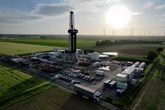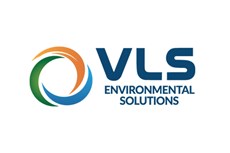Commission selects 47 Strategic Projects to secure and diversify access to raw materials in the EU
Published by Jess Watts,
Editorial Assistant
Global Mining Review,

The new Strategic Projects mark an important milestone in the implementation of the Critical Raw Material Act (CRMA), which aims to ensure European extraction, processing, and recycling of strategic raw materials meet 10%, 40%, and 25% of EU's demand by 2030, respectively. By helping Europe meet these targets, the new Strategic Projects contribute significantly to Europe's green and digital transitions, while supporting Europe's defence and aerospace industries.
Overview on the selected projects
The 47 new Strategic Projects are located across 13 EU Member States: Belgium, France, Italy, Germany, Spain, Estonia, Czechia, Greece, Sweden, Finland, Portugal, Poland, and Romania. They cover one or more segments of the raw material value chain, with 25 projects comprising extraction activities, 24 processing, 10 recycling, and 2 substitution of raw materials. The Strategic Projects cover 14 of the 17 strategic raw materials listed in the Critical Raw Materials Act. This includes several projects covering lithium (22 projects), nickel (12 projects), cobalt (10 projects), manganese (7 projects), and graphite (11 projects) which will particularly benefit the EU battery raw material value chain. These projects will ensure that the EU can fully meet its extraction, processing, and recycling 2030 benchmarks for lithium and cobalt, while making substantial progress for graphite, nickel, and manganese. Moreover, other strategic projects involving magnesium (1 project) and tungsten (3 projects) will contribute to the resilience of the EU's defence industry, which relies on the use of these materials. These projects were selected as they contribute to the EU's secure supply of strategic raw materials, adhere to environmental, social, and governance criteria, and are technically feasible. In addition, the selected projects have also demonstrated clear cross-border benefits for the EU.
Benefits for the selected projects
To become operational, the 47 Strategic Projects have an expected overall capital investment of €22.5 billion. These projects will be able to benefit from coordinated support by the Commission, Member States, and financial institutions to become operational, notably regarding access to finance and support to connect with relevant off-takers. They will also benefit from streamlined permitting provisions, to ensure predictability for project promoters while safeguarding environmental, social, and governance standards. In line with the CRMA, the permit-granting process will not exceed 27 months for extraction projects and 15 months for other projects. Currently, permitting processes can last from five to 10 years.
Stéphane Séjourné, Executive Vice-President for Prosperity and Industrial Strategy, European Commission, said:
“At the very start of our most strategic supply chains, are raw materials. They are also indispensable to the decarbonisation of our continent. But Europe currently depends on third countries for many of the raw materials it needs the most. We must increase our own production, diversify our external supply, and make stockpiles. Today, we have identified 47 new strategic projects that, for the first time, will help us secure our own domestic supply of raw materials. This is a landmark moment for European sovereignty as an industrial powerhouse."
Read the article online at: https://www.globalminingreview.com/mining/27032025/commission-selects-47-strategic-projects-to-secure-and-diversify-access-to-raw-materials-in-the-eu/
You might also like
ABB to power Vulcan Energy’s renewable lithium project
ABB has been selected by Vulcan Energy to deliver the complete electrical infrastructure for its Phase One Lionheart Project in the Upper Rhine Valley, Germany.


